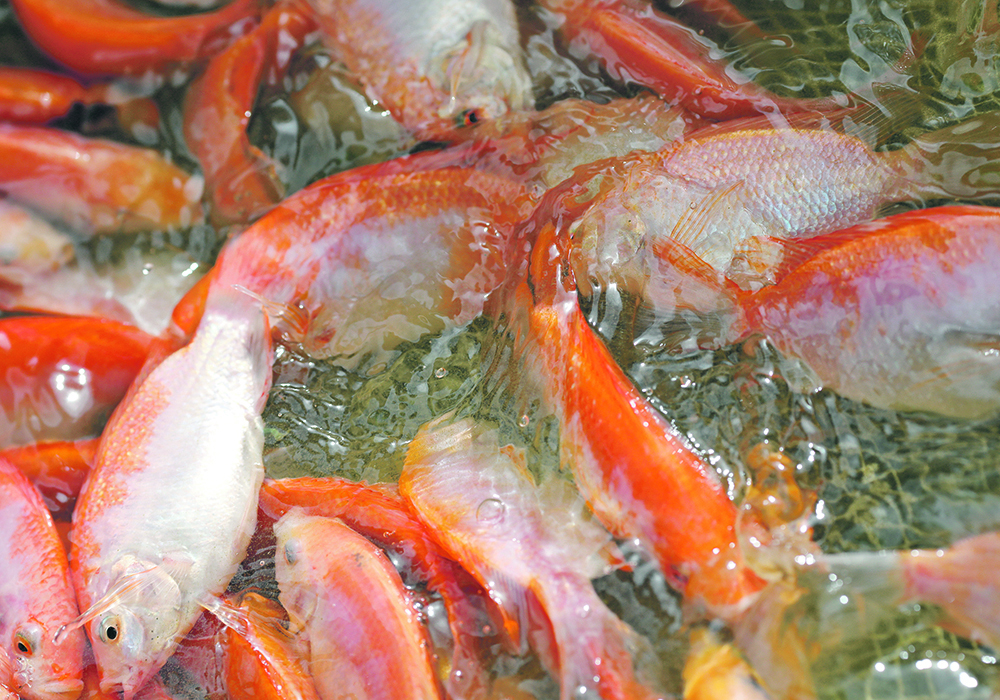Rex Newkirk is seeing a theme emerge among the food and feed ingredient producers he meets with in his role as director of the Canadian Feed Research Centre in North Battleford.
He told the audience at the ABIC Speaker Series event hosted by Ag-West Bio in Saskatoon on May 25 that he started the day with a meeting discussing the Codex Alimentarius, a set of international standards around food production.
“But I had three other meetings and they were all aquaculture, all ingredients: canola, faba beans and the last was insects. And these are all Canadian companies,” he said. “That’s just one day. That just gives you a sense of what we’ve got going on in this country.”
Read Also

Saskatchewan dairy farm breeds international champion
A Saskatchewan bred cow made history at the 2025 World Dairy Expo in Madison, Wisconsin, when she was named grand champion in the five-year-old Holstein class.
Newkirk’s centre is a University of Saskatchewan enterprise devoted to adding value to Canadian commodities and co-products. This involves creating special diets for animal science research projects as well as working with industry to create feed formulations for livestock, pets and companion animals.
Newkirk said the centre has three different scales of production. First is their “test tube” operation, designed to put out small batches of 50 to 100 kilograms. Next up is pilot scale, which tops out at about two tonnes per hour. Finally, there is industrial production capacity of 20 tonnes per hour. This last is leased out to a commercial company when not in use by the centre itself.
Processing includes a variety of specialized extrusion, vacuum coating, grinding and pelleting equipment.
“We can certainly make lots of aquaculture diets as well as diets for many species,” he said.
Aquaculture is growing around the world to feed humanity’s growing appetite for high-quality protein. Newkirk points to recirculating aquaculture systems as a significant development, as it decouples fish production from natural bodies of water and local climate. This allows fish farms to be located close to population centres, making it much easier to get fresh product onto consumer plates even in the dead of winter.
That said, with Canada’s relatively small population and large commodity output, Newkirk sees aquaculture feed formulations as the larger area of opportunity. This can include co-products such as canola meal or new uses for existing products such as flax, camelina or even hemp oil.
No matter where they are located, fish farms are running up against the challenge of what to feed their swimming livestock. Most farmed species such as salmon and trout are carnivores, which means feeding them pellets made of other fish such as menhaden, a sardine-like ocean species.
But like most wild fish stocks, harvests of menhaden and other like species are nearing their sustainable harvest limits.
Feed manufacturers have been able to swap in other ingredients such as plant proteins and oils. What’s missing in Western Canada is a place to test those formulations. Newkirk said there are a couple of small facilities in the Maritimes and some in the U.S. but that’s it.
To address this, Newkirk and several research colleagues at the U of S are proposing a new Sustainable Aquaculture Feed Research Facility. To be located at the Saskatoon campus, the effort pulls together partners from industry, commodity groups, information technology, government and two of Canada’s federal research superclusters. The new operation would work with the North Battleford feed research facility to design, formulate and test aquaculture diets based on prairie-grown commodities.
“We need facilities like this in order to capitalize on these opportunities,” Newkirk said. “We don’t have facilities to do growth studies, digestibility studies at the university any more.”
In Saskatchewan, with several major crushing plants coming on stream in the next few years, canola meal and its high quality protein could figure prominently. Newkirk said this meal has traditionally gone to feed dairy cattle in California as well as livestock rations in China.
“Now as we start adding another three, four million tonnes of crush in our local region, also we have a whole bunch of meal that really needs to find a home. There’s a home for it in the world, but I’d rather find one we don’t have to take it all the way over the mountains to get there.”
Newkirk warned against thinking that aquaculture is a small niche market. Providing reliable supplies of significant volumes is key.
“I met with BioMar recently which is one of the world’s largest aquaculture producers and they said, ‘well, yes, we’re looking for any useful ingredients that we can get, but we need to make sure we can get 40 to 50 thousand tonnes a year in order to commit our systems to these products.’
“That’s the advantage of Saskatchewan. When you start talking about four million tonnes of extra crush in Regina, the big volumes of pulses we have available to us, that’s the advantage we have. We can turn out high volumes.”















